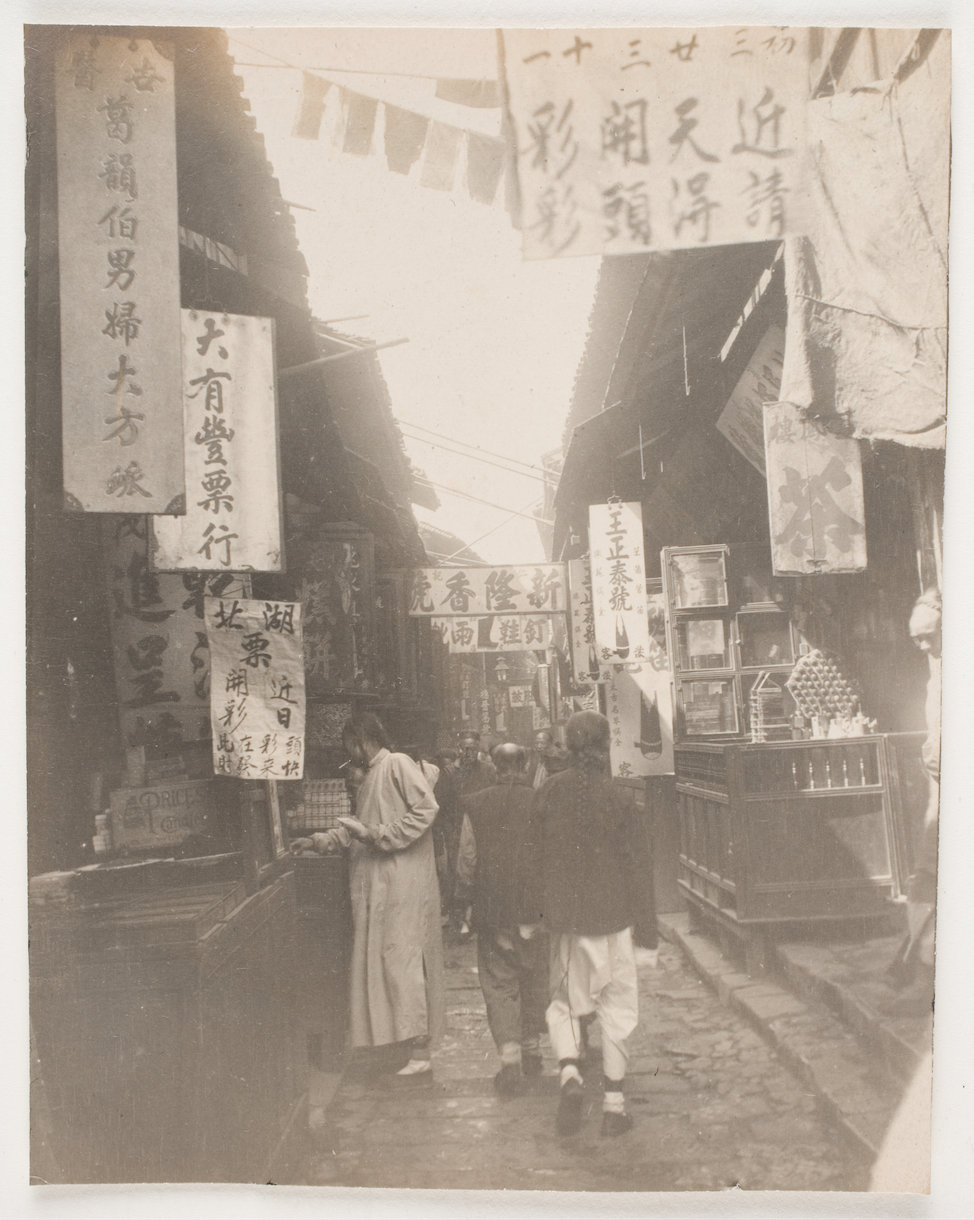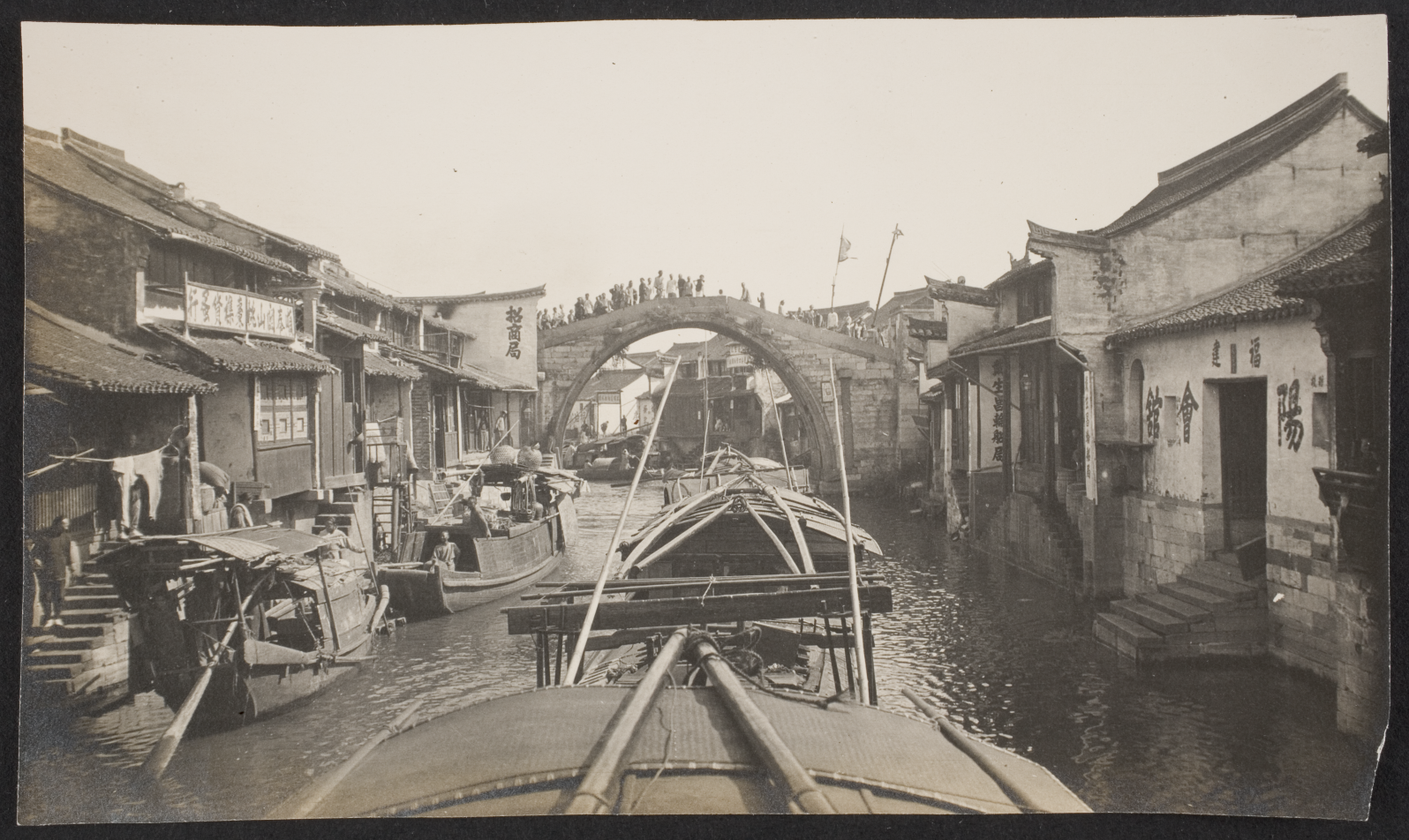The Davis Museum is closed for Wellesley College’s winter break. Please join us at our spring opening celebration on February 5, 2026, at 4 pm.
Photographic Technology

Joseph Nicéphore Niépce (French, 1765–1833), Untitled 'point de vue,' 1827. Heliograph on pewter, 16.7 x 20.3 x .15 cm. Gernsheim Collection, purchase, 964:0000:0001, Harry Ransom Center, The University of Texas at Austin
In the nineteenth century, travelers could purchase photographs to commemorate their journeys, but those with cameras could also capture their own images. Given the cost of early photographic equipment, and how quickly it evolved during the nineteenth century, amateur photographers had to be wealthy and interested in new technology. Early apparatuses were cumbersome and complicated to use. When Joseph Nicéphore Niépce took the world’s first photograph in 1826, he needed an entire day of sunshine to develop the image on a glass plate.
Niepce’s original process built on the camera obscura by projecting light onto a plate coated in light-sensitive chemicals to fix the resulting image rather than merely projecting it. Developments in photographic processes following Niepce’s innovation utilized glass plates covered in an emulsion of collodion and silver nitrate. Silver is sensitive to light, so when the plate is exposed, the image is fixed in black and white on the plate. The photographer thus obtains a negative, which can then be developed into paper prints, called positives. Known as a “wet-plate” process, collodion silver photographs had to be coated, exposed, and developed all before the plate could dry, making it complicated for amateur travelers.

Shanghai, China, detail, Travel Album: China and Japan, early 20th century, gelatin silver print, Gift of Jerome Hanauer 1989.66.65
This all changed with the invention of dry-plate gelatin silver processes in the early 1870s, which allowed plates to be pre-coated with silver halides suspended in a gelatin binder, exposed when ready, and then stored until the photographer was ready to develop prints. Increasing technological developments quickly sped the process up, allowing photographers to capture their subjects almost instantaneously–in seconds rather than hours. This photograph from the Davis Museum's album, featuring the crowded Northern Gate in Shanghai, demonstrates the advantages of the “instant photography” technique. For the first time, photographers could capture people in motion. With gelatin dry plates, photography became more accessible. People could capture and bring back photographs from their travels. To create this album, the collector used cutting-edge technology to document their travels.

Qingpu, Shanghai, detail, Travel Album: China and Japan, early 20th century, gelatin silver print, Gift of Jerome Hanauer 1989.66.201
At first, taking photographs also meant traveling with bulky equipment. The photographer had to bring a large camera with tripods, glass plates, jars of chemical processing ingredients, and a portable darkroom tent. Thanks to the technological and mechanical advances made after 1870, photographers used smaller cameras and purchased mass-produced ready-to-use plates, making it easier to take photographs while traveling. This meant that travelers, like the collector of the Davis’ album, could document their journeys in real-time. The photographer captured the above image while in motion aboard a boat in Shanghai, a major trade port. Thanks to the portability of photographic equipment, and shorter processing time, amateur photographers could capture dynamic scenes like this one.